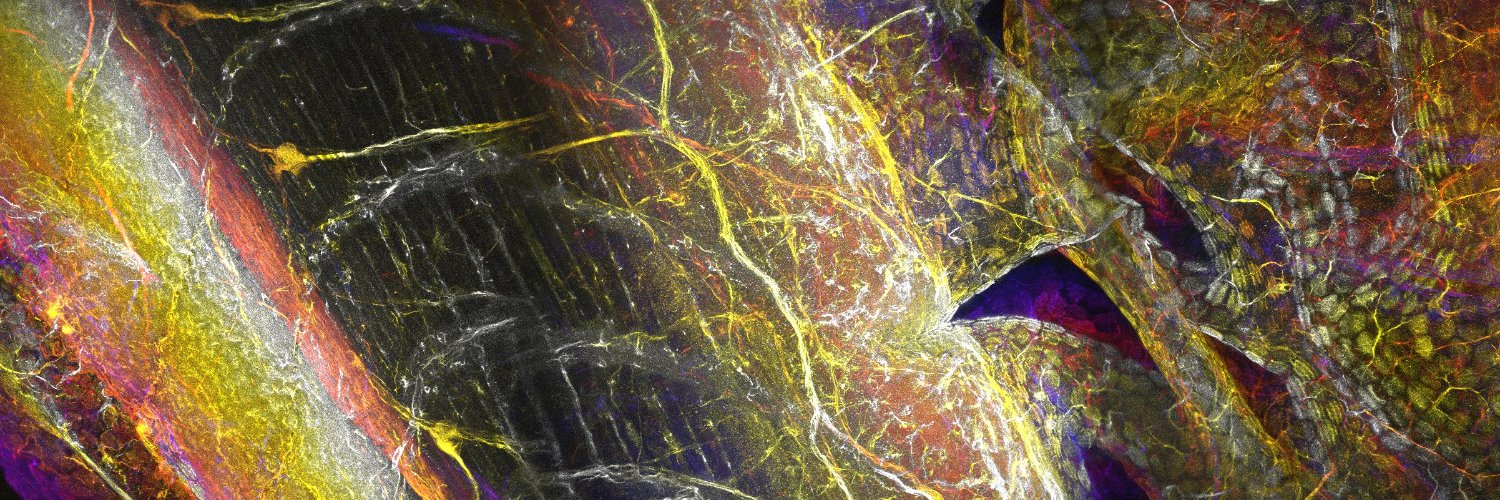
Wyss Institute
@wyssinstitute
The Wyss Institute seeks to transform engineering, medicine and the environment by creating new materials and devices using Nature’s design principles.
Prior to the Wyss' founding in 2009, a working group at Harvard University assembled envision the future of biomedical engineering. Now, we see the how this foundation led to successful technologies positively impacting human and planet health. wyss.harvard.edu/media-post/wys…

Outstanding collaborative effort to advance the field of non-viral delivery systems for genome editors, nucleic acid, and protein therapeutics @BIDMCSurgery @wyssinstitute @harvardmed @mit_hst Much thanks to @davidrliu and @somaticediting consortium! wyss.harvard.edu/news/entering-…
Excited to share our work developing Elastin-based Nanoparticles for Therapeutic delivERy (ENTER), a non-viral protein nanoparticle system for nucleic acid and protein delivery @NatureBiotech @echaikof! A 🧵on the iterative process of engineering ENTER and applications (1/17):
Congratulations to @SMitragotri for receiving the Founder’s Award from the Controlled Release Society, recognizing outstanding contributions to the field as well as exemplary leadership and impact on the scientific community. @wyssinstitute @CRS
New paper out, amazing team @wyssinstitute - @DonIngber @mmsperry @anishvasan and many others nature.com/articles/s4385… "AI-enabled drug prediction and gene network analysis reveal therapeutic use of vorinostat for Rett Syndrome in preclinical models"
Self-assembling protein nanoparticles for cytosolic delivery of nucleic acids and proteins go.nature.com/4mxazJw
The May issue is live nature.com/nbt/volumes/43… On the cover, a platform for template-independent enzymatic synthesis of RNA oligonucleotides using reversible terminator nucleoside triphosphates that offers a sustainable alternative to traditional methods go.nature.com/3zBfDZf
New preprint on single-molecule mechanostructural fingerprinting! doi.org/10.1101/2025.0… We use DNA nanoswitch calipers to characterize the geometry and mechanical stability of telomeric DNA G-quadruplexes. #Biophysics #SingleMolecule #Mechanobiology #DNAnanotech
Don Ingber, the @WyssInstitute’s founding director, said a stop-work order targeted two of his organ-on-a-chip projects. He details the rush to hold onto the consequential projects, talented researchers — and system that has driven American innovation. bit.ly/3GJ3nJK
Excited to share our new preprint! It's a light-guided approach for precise and programmable molecular patterning, enabling multiplexed single-molecule force spectroscopy—no lithography needed. Read more at @biorxivpreprint: doi.org/10.1101/2025.0… #Mechanobiology #SingleMolecule
For anyone who cares about their neighbors & the health of their loved ones, let's fight again for freedom. Now, it's not about taxation without representation; it's about science funding cessation without justification. If this resonates, please share. wyss.harvard.edu/news/common-se…
In the face of adversity, we at the @wyssinstitute won't stop pursuing our mission. We'll support our community, which has devoted itself to saving the lives of others & the planet. To do that, we need your help. Take a stand & show that science matters. wyss.harvard.edu/news/the-impor…
A multidisciplinary research team at the @wyssinstitute has developed a new coating technology that holds promise to substantially increase the lifespan of implanted and wearable biosensors while retaining their electrical signaling activities bit.ly/4j7sjZr
Circular Vector (CV) protocol describes a synthetic, cell-free approach for preparing transfection-ready, small, double-stranded DNA templates for gRNA expression for genome-editing applications doi.org/10.1038/s41596…
Researchers at @wyssinstitute have modeled inflammatory bowel disease in human colon chips! The chips used patient-derived colon epithelial cells & matched fibroblasts to discover new drivers of the disease, which affects up to 3.1M U.S. adults. medrxiv.org/content/10.110…
Check out our latest manuscript on high-throughput force spectroscopy! We've developed a next-generation CFM with multichannel fluorescence capabilities to study the the avidity of immune-cells at the single cell level biorxiv.org/content/10.110…
High-Throughput Centrifuge Force Microscopy Reveals Dynamic Immune-Cell Avidity at the Single-Cell Level biorxiv.org/content/10.110… #biorxiv_biophys
To address the diagnostic challenges of our times and prepare for the future of #healthcare, the @wyssinstitute is launching its “Diagnostics for Human and Planetary Health” platform. 💬 Learn more about the platform from its lead, Dr. David Walt: bit.ly/41cd2Ps
Our Collaboration Projects focus on driving discovery and treatment improvements for #bipolardisorder. Each project strengthens the connections between BD² teams to accelerate breakthroughs. Read more about the innovative work: tinyurl.com/2am7ynmc
Join us for a live webinar on Monday, February 24th at 11AM EST to hear Dr. Alican Ozkan (@OzkanPhD) from the @wyssinstitute share groundbreaking insights into modeling Inflammatory Bowel Disease (IBD) with Organ-on-a-Chip technology. Learn more: emulatebio.com/event/human-or…
#NASmember Jennifer A. Lewis of @hseas and @wyssinstitute will receive the 2025 James Prize in Science and Technology Integration for pioneering contributions to the programmable assembly of soft functional, structural, and biological materials! nasonline.org/award/james-pr… #NASaward
Check out our new perspective @AdvPortfolio Adv. Sci. on how natural biological olfaction (i.e., sniffing) can guide future designs of electronic noses! @hseas @wyssinstitute advanced.onlinelibrary.wiley.com/doi/10.1002/ad…